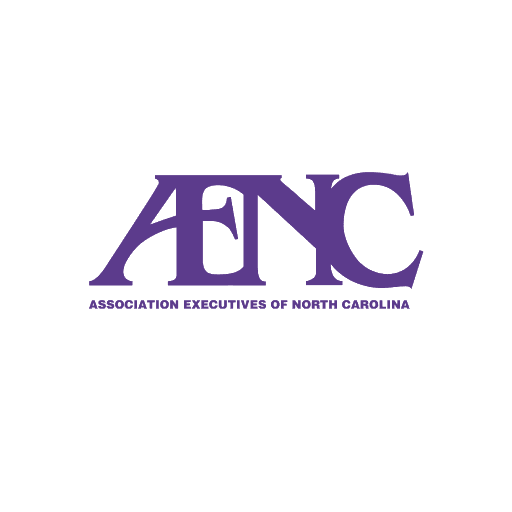Case studies showcasing audio visual charlotte nc in action
Comprehending the Addition of Audio Visual Innovation in Today's Educational Environments
The integration of audio-visual innovation in instructional setups has changed the training and learning procedure. Educators now have access to tools that accommodate numerous finding out designs, improving pupil involvement and collaboration. The incorporation of these innovations presents both chances and obstacles. Understanding how to properly carry out these tools is vital. What methods can educators utilize to maximize the advantages of audio-visual technology in their class?
The Evolution of Audio-Visual Technology in Education
As instructional requirements advanced over the decades, audio-visual technology undertook considerable makeovers that reshaped the learning environment. Devices such as movie projectors and slide shows were the primary ways of integrating aesthetic aspects right into class. These early innovations offered teachers with the ability to present information dynamically, yet they were limited in availability and interactivity.
With the introduction of video clip cassette recorders in the 1970s, classrooms began to integrate documented lessons, expanding the range of academic sources. The introduction of desktop computers in the 1980s further changed this landscape, permitting the creation of multimedia presentations and interactive discovering experiences.
The rise of the web in the 1990s marked a zero hour, allowing real-time accessibility to a wealth of audio-visual products. Today, electronic devices such as interactive whiteboards and on-line understanding systems proceed to improve the academic experience, cultivating interaction and partnership amongst learners.
Advantages of Audio-Visual Devices for Diverse Learning Styles
Audio-visual tools play an important role in providing to varied understanding styles by improving aesthetic understanding and improving acoustic engagement. By incorporating photos, videos, and sound, these innovations produce an even more comprehensive educational atmosphere. This multifaceted method enables teachers to resolve the different choices and demands of trainees properly.
Enhancing Visual Knowing
Engagement in the understanding procedure is markedly enhanced via the use of audio-visual tools, catering to numerous learning designs. These tools, such as video clips, infographics, and interactive presentations, supply aesthetic stimuli that assist understanding and retention. Aesthetic learners, in particular, benefit from the consolidation of photos and computer animations, which can streamline complex ideas and improve understanding. Additionally, audio-visual sources can illustrate real-world applications, making finding out more relevant and engaging. By incorporating shade, movement, and sound, teachers can create a vibrant discovering environment that captures trainees' interest and cultivates much deeper cognitive links. Inevitably, the critical use audio-visual innovation not only sustains visual knowing however additionally enhances the overall educational experience for diverse learners.
Improving Auditory Involvement
A substantial benefit of integrating audio-visual devices in education and learning is their ability to boost acoustic involvement amongst pupils. These devices, which include multimedia discussions, podcasts, and interactive audio components, satisfy numerous discovering styles, especially profiting auditory learners (audio visual charlotte nc). By incorporating noise and narrative, educators can produce immersive experiences that capture trainees' focus and enhance understanding. This involvement is necessary, as it promotes a deeper understanding of the product and advertises retention. Additionally, audio-visual tools can facilitate collective learning settings, motivating pupils to join conversations and share their insights. Eventually, the incorporation of audio-visual modern technology not just sustains acoustic engagement yet also improves the general educational experience, making finding out more dynamic and efficient for all trainees
Enhancing Involvement Via Interactive Learning

Additionally, gamification components, such as quizzes and simulations, can enhance motivation and retention, making discovering more pleasurable and efficient. These methods not just promote cognitive engagement yet also accommodate diverse discovering styles, making sure that all pupils can get involved meaningfully. Therefore, interactive learning environments cultivate a sense of area and belonging, inevitably causing boosted academic results. Via the integration of audio aesthetic innovation, educators can change conventional classrooms right into dynamic rooms where trainees grow and proactively shape their academic trips.
Bridging Concept and Experiment Multimedia Resources
Multimedia sources serve as a critical web link between theoretical principles and practical application in instructional settings. By boosting involvement, helping with collaborative understanding experiences, and sustaining varied understanding styles, these devices create an extra inclusive and vibrant understanding setting - audio visual charlotte nc. This approach not only fosters deeper understanding however also prepares trainees for real-world difficulties

Enhancing Involvement With Multimedia
Interaction in instructional setups greatly enhances continue reading this when instructors integrate multimedia resources right into their teaching strategies. Making use of video clips, podcasts, and interactive presentations improves the finding out experience, allowing pupils to connect with the material on several degrees. Multimedia resources cater to various finding out designs, providing aesthetic, auditory, and kinesthetic stimulations that can hold trainees' focus more efficiently than standard lecture methods. Additionally, these resources can streamline complicated ideas, making them much more easily accessible and memorable. By incorporating multimedia, instructors can create a vibrant class setting that promotes curiosity and inspires learners. Eventually, the calculated use of audio-visual technology serves to connect the void between academic knowledge and functional application, improving the academic experience for both instructors and pupils.
Helping With Collaborative Understanding Knowledge
Countless research studies show that collective understanding experiences markedly boost trainee end results when incorporated with multimedia sources. Multimedia devices facilitate communication amongst trainees, enabling them to take part in problem-solving and vital believing collectively. By making use of video conferencing, collective platforms, and interactive presentations, teachers produce atmospheres for synergy and shared knowing. These technologies allow trainees to communicate their ideas successfully and receive prompt feedback, fostering a much deeper understanding of the subject issue. Furthermore, multimedia resources can present complicated concepts in more absorbable layouts, promoting discussion and collaboration. Because of this, the mix of joint learning and audio-visual technology not only improves the instructional experience but likewise prepares students for real-world team effort characteristics, highlighting the significance of teamwork and collective understanding construction.
Sustaining Diverse Learning Styles
While typical training techniques commonly provide to a limited range of finding out choices, the integration of audio-visual technology uses a much more inclusive method to education and learning. By using multimedia sources such as video clips, interactive simulations, and digital presentations, teachers can deal with various finding out styles, consisting of Extra resources visual, auditory, and kinesthetic. This versatility enables set apart guideline, enabling students to engage with web content in methods that resonate with their individual choices. Furthermore, audio-visual devices can facilitate much deeper understanding by supplying several representations of complex principles. Therefore, students that might battle with conventional approaches can discover different pathways to success, cultivating a much more fair knowing atmosphere that sustains scholastic achievement for all learners.
Challenges in Implementing Audio-Visual Innovation
Although audio-visual modern technology holds great promise for enhancing educational experiences, its application commonly runs into significant obstacles. One main worry is the monetary worry connected with buying and maintaining such tools, which can stress spending plans, particularly in underfunded establishments. Furthermore, insufficient training for educators can hinder effective integration, leaving them ill-prepared to use the modern technology completely. Technical issues, such as software program breakdowns and compatibility issues, might also disrupt lessons and discourage both instructors and trainees. Furthermore, varying degrees of student accessibility to technology outside the class can produce variations in finding out possibilities. The capacity for over-reliance on modern technology might take away from vital mentor approaches, ultimately limiting the educational experience. Addressing these challenges needs a thorough method, including adequate financing, specialist advancement, and equitable access to resources, to assure that audio-visual modern technology can be leveraged properly in today's instructional settings.
Ideal Practices for Integrating Modern Technology in the Classroom

Additionally, cultivating an interactive atmosphere with joint tools urges student interaction and participation. Utilizing diverse audio-visual resources accommodates numerous finding out styles, suiting visual, acoustic, and kinesthetic learners. Frequently assessing the impact of modern technology on pupil understanding aids instructors improve their methods and adapt to changing needs. Finally, entailing pupils in the selection of innovation promotes ownership and inspiration. By adhering to these ideal techniques, instructors can create a dynamic classroom environment that properly integrates innovation and improves the instructional experience for all trainees.
The Future of Audio-Visual Innovation in Education
As class significantly welcome technology, the landscape of audio-visual devices in education proceeds to develop (audio visual charlotte nc). Future innovations are anticipated to concentrate on higher interactivity and customization, allowing teachers to customize learning experiences to individual student needs. Developments such as increased fact (AR) and virtual reality (VIRTUAL REALITY) will likely offer immersive knowing environments, enhancing student engagement and understanding
Fabricated intelligence (AI) is positioned to play a substantial function in audio-visual modern technology by using real-time responses and adaptive knowing paths. This combination may assist teachers recognize and resolve trainee challenges better. Cloud-based systems will certainly assist in much easier access to resources and partnership among pupils and educators, despite location.
Along with these technical advances, specialist advancement for Visit Website teachers will certainly be essential, ensuring they are geared up to use these devices successfully. In general, the future of audio-visual innovation in education and learning assures to produce even more dynamic, inclusive, and impactful understanding experiences.
Regularly Asked Questions
Just How Can Teachers Select the Right Audio-Visual Tools for Their Class?
Selecting appropriate audio-visual devices needs teachers to evaluate their instructional goals, think about trainee demands, examine readily available modern technology, and look for suggestions from peers or specialists, making sure tools successfully boost learning and interaction within their details class atmosphere.
What Spending plan Factors to consider Are There for Carrying Out Audio-Visual Modern Technology?
Budget plan considerations for applying audio-visual technology consist of initial acquisition prices, maintenance costs, training for personnel, and prospective software licensing fees. In addition, lasting financial investment in updates and substitutes ought to likewise be factored into economic planning.
Are There Specific Training Resources for Teachers on Audio-Visual Equipment?
Lots of organizations offer training resources for educators on audio-visual devices, including online training courses, workshops, and educational guides. These resources aim to boost teachers' skills and self-confidence in properly incorporating technology right into their teaching methods.
How Do We Determine the Effectiveness of Audio-Visual Technology in Knowing?
Measuring the effectiveness of audio-visual innovation in finding out involves examining trainee involvement, understanding, retention prices, and total academic efficiency. Surveys, assessments, and empirical studies can offer beneficial understandings right into its effect on educational outcomes.
What Are Common Mistaken Beliefs Concerning Audio-Visual Technology in Education And Learning?
Common false impressions concerning audio-visual innovation in education and learning include the belief that it assures interaction and finding out outcomes, along with the presumption that all pupils profit just as, ignoring individual discovering choices and demands.